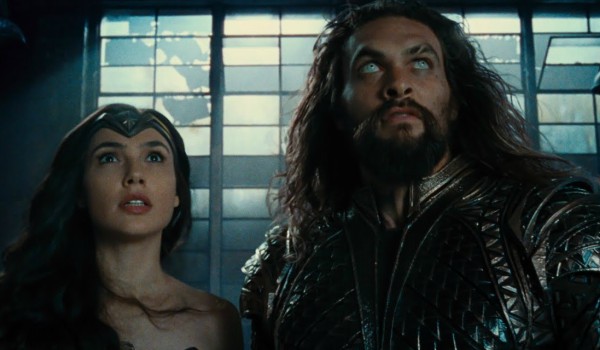Last week, for fans of the DCEU around the world, the dream came true. After clamouring for its release since the initial version of Justice League came out back in November 2017, Zack Snyder’s original cut of Justice League will be released on the newly launched HBO Max streaming service. But let’s back up a second. The momentous news here shouldn’t just be that it’s going to be released. The news that everyone has glossed over is the fact that the Snyder cut of Justice League exists at all. After years of the hashtag #ReleasetheSnyderCut being littered across social media, it’s happening, and it marks the point where the Snyder cult, who have been demanding for the “true” version of Justice League, now has its dreams torn to shreds.
To be clear, I don’t refer to DCEU fans in general when I say “Snyder cult”. Not everyone who is interested in seeing Zack Snyder’s Justice League is tied to this ravenous corner of the fandom. Of course not. What I mean here is how the rampant subculture surrounding the whole “Release the Snyder Cut” movement is in fact a symptom of a much wider phenomenon that tends to occur with “lost” media in popular culture, such as Justice League. For full context, the Justice League of 2017 isn’t the one that was meant to be. Whilst the film began production under the vision of Snyder, his departure from the film following a personal tragedy led to Joss Whedon not only taking over production, but steering Snyder’s original vision off course into something that was deemed more light-hearted. This left fans unsatisfied, downright outraged in certain corners, hence the blossoming of the cult to see the original Justice League restored.
With the Snyder Cut now proved to exist, these fans are now jumping for joy. But I would argue releasing the Snyder Cut is the worst thing that can happen to these fans. Whilst the Snyder cut remained out of reach, unproven in its existence, it was indestructible. It remained in a limbo of unproven tangibility, the Schrodinger’s cat of film, its unconfirmed status giving it a cult appeal. No-one could say that it was a bad film, because no-one could prove that it was any sort of film at all. It therefore fulfilled everyone’s expectations, because every fan filled in the gaps for what the original vision of Justice League was meant to be.
This isn’t me lambasting those excited to see a version of the film they’ve wanted to see. This is, in fact, a natural course of events that happen when unseen or unheard variations of films, TV shows, music, books, comics and more gain a sort of mythical momentum. Nobody has seen them and yet everyone talks about them, as if they’re some great, lost treasure who’s appeal lies in how no-one can confirm or deny its existence, i.e. a legend. How are they different from the source material? Do they even exist at all? The guessing is all part of the fun. The Snyder Cut can’t even claim to be the first superhero movie to go through these motions. From Tim Burton‘s Superman Lives to James Cameron‘s Spider-Man, to any number of albums Neil Young has produced in his lengthy career, only to prevent them from being released at the last moment. Even Thomas the Tank Engine attracts this sort of in-depth analysis. During the making of the TV series’ second season, an episode adapted from one story in The Twin Engines‘ book, The Missing Coach, began being produced, but was never finished, leading fans to conduct elaborate investigations to find out what happened to this lost episode. This is how deep the appeal for lost media is. The uncertainty of whether or not they truly exist is incredibly intoxicating.
What makes the Snyder cut of Justice League movement different has been its transmission through the self-righteousness of social media. The demands fans were able to make were all done behind the all-covering veil that social media gives, coupled with the capability of these aggressive demands spreading like wildfire to like-minded fans. The hashtag itself even reached the actors themselves earlier this year. Whilst the Snyder cut remained nothing more than a fantasy, it met everyone’s desires and demands. But now that it’s a confirmed, tangible, real piece of media, made by human beings capable of fault or failing to meet expectations, Zack Snyder’s Justice League will undoubtedly not fulfil everyone’s dreams. The bubble has been burst. The dream is over.
Or is it?
Despite the announcement of Zack Snyder’s Justice League confirming that the intended rendition of the film exists, it shan’t appear on HBO Max until 2021. It also remains unconfirmed if the film will be released as the finished four-hour film or a possible 6-part miniseries. For the time being, the mystique remains intact. It’s also ignited hopes of David Ayer‘s original vision of the similarly critically-mauled DCEU film Suicide Squad being released on the streaming service. Elsewhere, the toxic underbelly beneath all of this threatens to erupt further. Similar social media-driven campaigns to release the, ahem, “true” versions of The Rise of Skywalker and revive Netflix’s Daredevil continue to gain momentum.
How many more hashtag movements will it take for these fans to have their unquenchable thirst satisfied? What might happen if all of these original renditions of their favourite films and TV shows get released? They will surely weep, for they will have no more worlds to conquer. All they’ll be left with are forms of media that, ultimately, may not have even been worth all of the hassle. The safety and comfort that lost media brings is an ongoing cultural trend that doesn’t begin or end with Zack Snyder’s Justice League. Instead, it’s this film that rides on the coattails of a cultural phenomenon that sparks such a strong emotional response from fans.
Are you excited in seeing Zack Snyder’s Justice League? Let us know in the comments section below or send us a Tweet!



